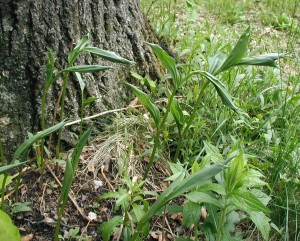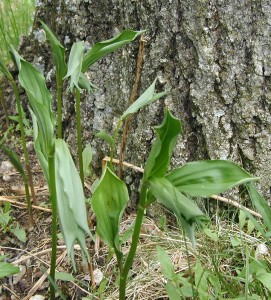Finding a plant that you’ve never seen before can be exciting and even exhilarating, depending on the rarity of the plant and the likelihood of ever seeing it again – and on the efforts taken to observe such a thing. Finding a plant that you already know, but haven’t seen in the flowering or fruiting stage, or locating a flower in a new location can be just as exciting.
Once you’re familiar with some perennial plants, and if you know where a perennial plant comes up in the Spring, you can watch these plants change through the seasons. The same can be said for planting annuals by seed.
A fun project to do with interested children is to keep a photographic record by clicking a few photos each week as your plants develop. Compare the growth of your plant by comparing photos as you go along. You might learn a thing or two about your favorite perennial or wild herb.
A fairly common plant of our mixed-hardwood forest is a flowering herbaceous plant called False Solomon’s Seal, Smilacina racemosa. It’s noted for its similarity to Solomon’s Seal, Polygonatum biflorum, except for its terminal flower stalk and lack of dangling bell-shaped flowers.
Leaves of both False Solomon’s Seal and Solomon’s Seal are linear-veined oval leaves that alternate along a single arched stem. As the plant emerges from the ground the leaves are already forming.


The twisted stalks of the perennial False Solomon’s Seal coming up at base of an oak tree.

Leaves are rolled together at first and unfurl as the plant stalk grows, about 8 – 12 inches tall in these images, taken 2 May 2010. The main reason we can confidently state these are False Solomon’s Seal plants is that we’re familiar with these perennials that come up in the same place each Spring.